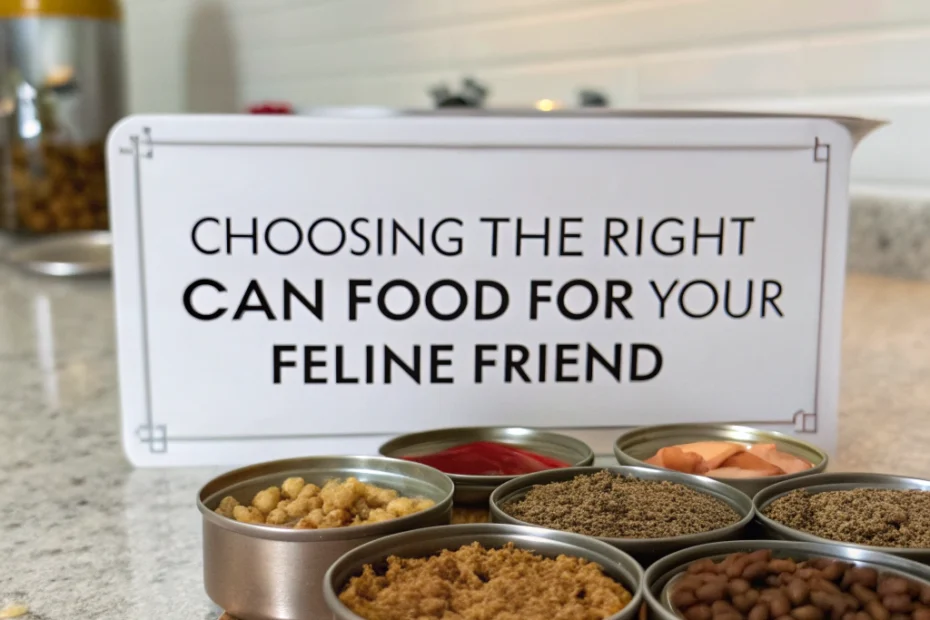At-a-Glance
When it comes to feeding your beloved feline, can cat food is a popular choice due to its convenience and nutritional value. In this article, we will explore the essentials of selecting the best can cat food, ensuring safety, and understanding what makes it a preferred option among cat owners.
How to Choose
Choosing the right can cat food involves several considerations:
- Ingredients: Look for high-quality proteins as the primary ingredient, such as chicken, beef, or fish.
- Nutritional Content: Ensure the food meets AAFCO standards for a complete and balanced diet.
- Cat’s Age and Health: Consider age-specific formulas (kitten, adult, senior) and any health conditions your cat may have.
- Flavor Preferences: Cats can be picky, so it may require some trial and error to find flavors they enjoy.
Safety & Setup
Safety is paramount when feeding your cat:
- Storage: Store unopened cans in a cool, dry place. Once opened, refrigerate and use within a few days.
- Serving: Serve food at room temperature to enhance flavors and make it more appealing to your cat.
- Hygiene: Clean your cat’s food dish after each meal to prevent bacterial growth.
Core Pillars
The core pillars of can cat food include:
- Hydration: Can cat food provides moisture, helping to keep your cat hydrated.
- Palatability: The texture and aroma often make it more appealing compared to dry kibble.
- Digestibility: High-quality can cat food is generally easier for cats to digest.
Placement & Environment Tips
Where and how you feed your cat can impact their eating habits:
- Quiet Location: Choose a quiet, low-traffic area for feeding to minimize stress.
- Consistency: Feed at the same times each day to establish a routine.
- Multiple Cats: Ensure each cat has its own feeding space to prevent competition and stress.
Comparison with Alternatives
Can cat food vs. dry cat food:
- Moisture Content: Can food has higher moisture, beneficial for hydration.
- Freshness: Can food requires refrigeration once opened, unlike dry food which is shelf-stable.
- Cost: Can food can be more expensive, but it may offer better nutritional quality.
FAQs
How often should I feed my cat can food? It depends on their age, health, and activity level. Generally, two meals a day are recommended.
Can I mix can and dry food? Yes, many owners mix both to provide variety and balance.
What if my cat is allergic to certain ingredients? Consult your vet to identify allergens and choose hypoallergenic options.
What to Do Next
Now that you have a better understanding of can cat food, consider experimenting with different brands and flavors to find the best fit for your cat. Always monitor their health and behavior to ensure they are thriving on their diet.
Disclaimer: Always consult your veterinarian for personalized advice regarding your cat’s health.
